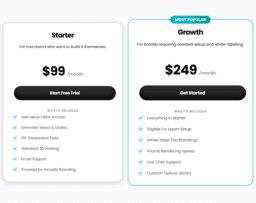A Beginner’s Perspective of Godot vs Phaser
Godot and Phaser serve different niches in game development. If you’re eyeing a feature-rich, scene-based solution for 2D or 3D games, choose Godot. On the other hand, if your focus is speedy HTML5 2D game development, opt for Phaser.

Key Differences Between Godot and Phaser
- Godot leverages an intuitive, node-based and scene-driven design while Phaser uses an HTML5 canvas rendering approach.
- In terms of language support, Godot extends to GDScript, C++, C#, and community-based options whereas Phaser is based on JavaScript and TypeScript.
- While Godot has a game engine supporting both 3D and 2D, Phaser specializes only in 2D game development.
- Godot comes under the MIT license, offering a completely free and open source experience. Phaser offers a free and open-source framework, with a more community-driven development model.
| Comparison | Godot | Phaser |
|---|---|---|
| Structure | Scene-driven design with reusable scenes composed of game blocks/nodes. Nodes arranged into trees, scene tree holds all the game’s scenes. | JavaScript & TypeScript based. Game project typically includes scripts/js folders, src folder, assets folder, and index.html. |
| Scripting Language | GDScript, C++, C# (.NET platform). Community support for Rust, Nim, Python, D. | JavaScript, TypeScript. |
| 2D Support | Specialized 2D workflow. | Predominant focus on 2D games. |
| Import Capabilities | Direct import of Blender files. | Assets folder holds graphic & sound assets, tilemaps, miscellaneous data. preload() brings in all declared assets. |
| Platform Support | Multiple platforms including desktop, mobile & Web. Godot 3.5 supports Android phones & tablets. | Any browser supporting canvas. Games deployable to iOS, Android, native desktop apps via Apache Cordova or PhoneGap. |
| Engine Type | Open-source game engine. No licensing fee. | Open-source 2D game framework. |
| Language Support | GDScript, C++, C#, Community support for Rust, Nim, Haskell, Clojure, Swift & D. | JavaScript, TypeScript. |
| Community | Open-source, modifiable codebase; active global developer community. | 1800+ examples of code, active community support, Phaser Mini-Degree. |
| Learning Curve | Ideal for beginners & experienced game devs. | Regarded as valuable entry point for new game devs with comprehensive resources and tutorials. |
| Audio Support | Audio Bus/Layout system with real-time effects implemented. | Allows web & HTML5 audio for sound playback. |
| Editor | Built-in visual editor for coding. | Code written in scripts/js folders. |
What Is Godot and Who’s It For?
Godot is an open-source game engine revered for its intuitive, scene-driven design. It allows the creation of games from simple to complex using blocks, nodes, and scenes. The engine is empowered by its built-in scripting language, GDscript, with full support to C# for .NET platform and official C++ support in 4.0 via GDExtension API.
This versatile engine is perfect for developers globally, regardless of experience level – be it novices eager to materialize their gaming ideas, or established firms wanting to experiment without hidden fees.

Pros of Godot
- Free, open-source, with modifiable codebase
- Supports C#, C++, GDScript, and other language bindings
- 3D engine adaptable for high and low-end devices
- Direct import of Blender files
- All-inclusive tools for editing, scripting, and debugging
Cons of Godot
- Complex 3D game development might be challenging
- .NET availability restricted to desktop platforms in Godot 4
What Is Phaser and Who’s It For?
Phaser is a dynamic 2D game framework. Built by Richard Davey, it’s designed for creating HTML5 games deployable to a variety of platforms, including iOS, Android, and native desktop apps. Based in JavaScript and TypeScript, Phaser leverages Canvas and WebGL renderers to ensure swift game rendering.
For anyone interested in web game development, Phaser presents itself as a solid starting point. It offers a comprehensive, large ensemble of learning resources, plus active community support for enthusiasts and professionals alike.

Pros of Phaser
- Supports JavaScript and TypeScript
- Deploys games to iOS, Android, and desktop apps
- 1800+ examples, active community support
- Multiple physics system and audio support
Cons of Phaser
- Requires browser support for canvas element
Godot vs Phaser: Pricing
Herein lies a comparative analysis of two open-source solutions, Godot and Phaser, with both offering free usage without hidden fees.
Godot
Being an open-source game engine, Godot is free under the MIT license. It allows development of stellar games without any licensing fees, contracts, or hidden fees, ensuring freedom and flexibility for both beginner and experienced developers globally. This includes a robust offering of features such as a modifiable and reusable codebase, a 3D engine that can accommodate both high and low-end devices, and support for a myriad of languages: GDScript, C++, C#, with community support for Rust, Nim, Haskell, Clojure, Swift, and D.
Phaser
Phaser, a 2D game framework for developing HTML5 games for desktop and mobile platforms, is also an open-source platform and hence, free to use. Established by Richard Davey, Phaser brings to the table an ensemble of features including a custom WebGL renderer, compatibility with any browser supporting canvas element, multiple physics systems, and web & HTML5 audio for sound playback. Its game creation process is simplified by providing over 1800 examples and an abundantly supportive community.
Code Examples for Godot & Phaser
Godot
In this Godot code snippet, we create a simple 2D character sprite that moves up when the space key is pressed. Note: This code is intended to be implemented within a script of a 2D sprite node and assumes a sprite with 2D movement capabilities.
extends KinematicBody2D
var speed = 200
func _physics_process(delta):
var velocity = Vector2()
if Input.is_action_just_pressed('ui_select'):
velocity.y = -speed
velocity.y += speed * delta
move_and_slide(velocity)
Phaser
This Phaser code showcases simple scene transition. It switches from ‘SceneA’ to ‘SceneB’ when the mouse is clicked. Make sure to have Phaser 3.16+ installed and ‘SceneA’ and ‘SceneB’ properly set up.
class SceneA extends Phaser.Scene {
constructor() {
super({ key: 'SceneA' });
}
create() {
this.input.once('pointerdown', function () {
this.scene.start('SceneB');
}, this);
}
}
class SceneB extends Phaser.Scene {
constructor() {
super({ key: 'SceneB' });
}
create() {
console.log('SceneB now active');
}
}The Verdict: Godot vs Phaser – A Battle of Titans
In the ultimate face-off between Godot and Phaser, making a choice appears intimidating. However, your needs as an AR/VR creator, developer, or tech enthusiast will tell which technology emerges victorious for you.
For the Indie Game Developer
For an indie game developer working on tighter budgets and resources, Godot is the potential choice. With its open-source framework, intuitive scene-driven design, and a built-in scripting language, Godot fosters creativity sans constraints. Include src = ” alt = ‘Indie game developer skimming over lines of code for a game’s subtler design elements’
The Mobile Game Designer
Compromise not on flexibility and speed if you’re a Mobile Game Designer; Phaser is your ultimate pick. Given its Canvas and WebGL compatibility, Phaser caters to cross-platform needs, making it a boon for HTML5 games focused on mobility. Include src = ” alt = ‘Mobile game designer working on Phaser interface on a sizeable desktop display.’
3D-Artist Turned Game Creator
Transition from a 3D-Artist to Game-creator becomes seamless with Godot’s 3D support and Blender file compatibility. Its dedicated 3D engine streamlines game logic, promoting an efficient design cycle for multi-faceted game-based applications. Include src = ” alt = ‘An artist casually transitioning from creating 3D assets to developing an entire game scene.’
Navigating through the labyrinth of game tech, Godot emerges as a versatile & flexible platform well-suited for indie game developers and 3D artists, owing to its open-source and scene-driven design; Phaser, with its Canvas-to-WebGL adaptability, proves to be a robust companion for HTML5 mobile game designers. As your choice rests on your project needs, the verdict swings, making both Godot and Phaser champions in their domains.







